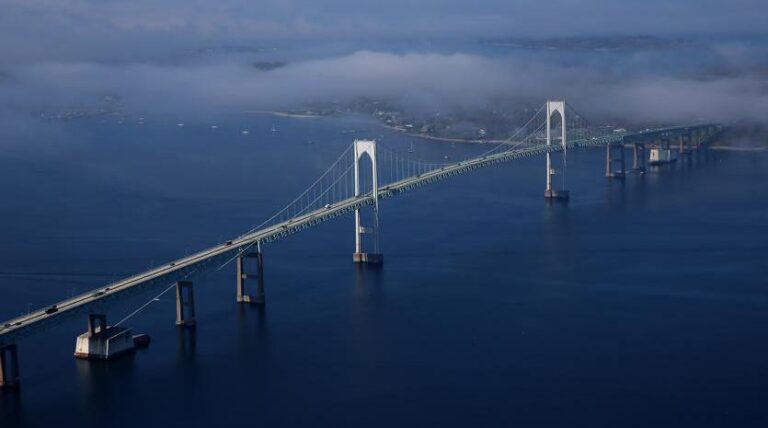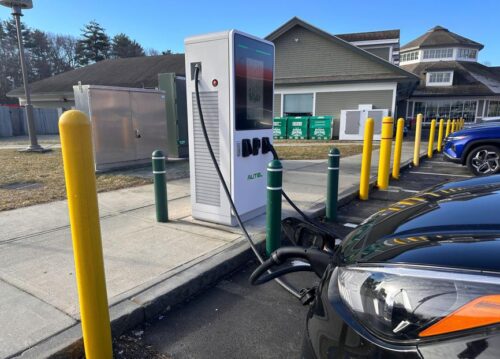PROVIDENCE — The Rhode Island Turnpike and Bridge Authority has started an assessment of the Claiborne Pell Bridge as the National Transportation Safety Board has recommended dozens of bridges around the country be analyzed following the deadly collapse of a Baltimore bridge last year.
In an April 18 letter to the NTSB, Lori Caron-Silveira, executive director of RITBA, wrote the agency has contacted an engineering firm to complete a vulnerability assessment of the 56-year-old bridge that connects Newport and Jamestown over Narragensett Bay, and is commonly known as the Newport Bridge.
RITBA completed its own review of the bridge last year. But the NTSB last month recommended a study of the structure and 67 others around the nation for risk of collapse in the event the bridges are struck by a passing vessel.
The Francis Scott Key Bridge in Baltimore was hit by a cargo ship before it collapsed on March 26, 2024, killing six construction workers.
As part of its investigation into the collapse, the NTSB said last month it found dozens of bridges in the United States – including the Pell Bridge – that do not have a current vulnerability assessment. That group also includes Boston’s Tobin Bridge and the Sagamore and Bourne bridges on Cape Cod.
The NTSB said its report “does not suggest that the 68 bridges are certain to collapse,’’ however.
But the agency recommended the owners of each bridge evaluate whether the structures are above an “acceptable level of risk’’ as determined by the American Association of State Highway and Transportation Officials, and to develop and carry out a risk reduction plan should calculations show a bridge has a risk level higher than the set threshold.
NTSB Chairman Jennifer L. Homendy wrote to RIBTA officials in March, notifying them that the Pell Bridge was identified as among those that lack an up-to-date assessment.
“The NTSB is vitally interested in these urgent recommendations because they are designed to prevent accidents and save lives,’’ Homendy wrote in her letter, which was released by RITBA on Monday.
According to Caron-Silveira’s response letter, RITBA will complete the assessment and produce a report, which is expected in about six months.
Caron-Silveira noted RIBTA already completed a “comprehensive internal review to assess the vulnerability of its infrastructure,’’ including the Pell Bridge, in the immediate aftermath of the Baltimore bridge collapse last year.
Opened in 1969, the bridge connects Aquidneck Island to Conanicut Island and spans a part of the bay that services non-container ports, Caron-Silveira wrote. Cargo carried through the region “typically includes automobiles, salt, scrap metal, home heating oil, and liquified petroleum gas,’’ Caron-Silveira wrote.
“Our research indicates that the vessels navigating this area are smaller than the container vessel involved in the Key Bridge incident,’’ Caron-Silveira wrote. “Furthermore, existing pilotage practices, navigational controls, and the design and construction of the main Pell Bridge piers, which extend approximately 100 to 150 feet below mean high water, constitute additional protective factors.’’
The new bridge assessment will include analysis of historical vessel traffic data as well as “waterway characteristics, navigation procedures, geotechnical and bathymetric data, and structural engineering specifications of the bridge,’’ according to Caron-Silveira.
“If the risk exceeds AASHTO’s acceptable threshold, RITBA will collaborate closely with the firm to develop and implement a comprehensive risk reduction plan in alignment with your recommendations,’’ Caron-Silveira wrote to the NTSB.
Christopher Gavin can be reached at christopher.gavin@globe.com.


